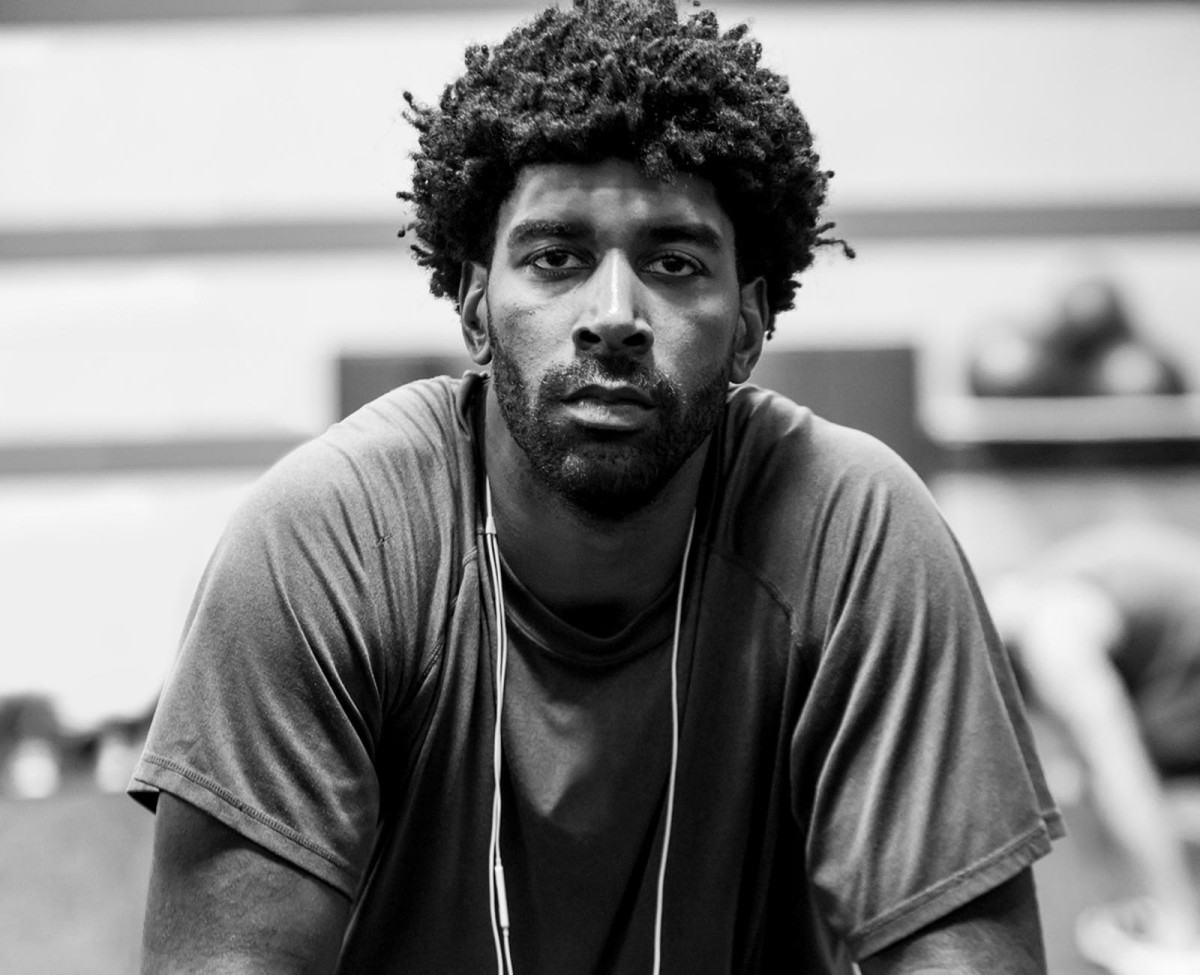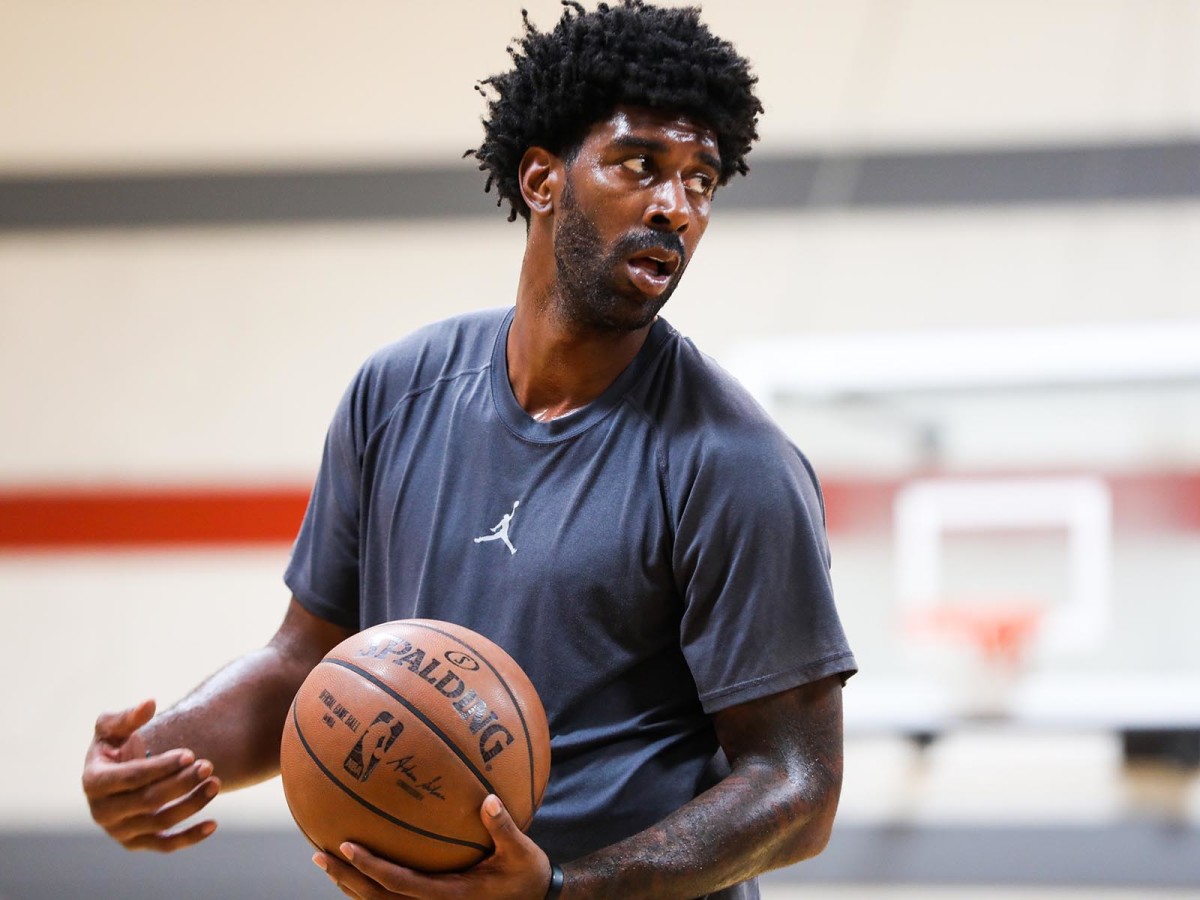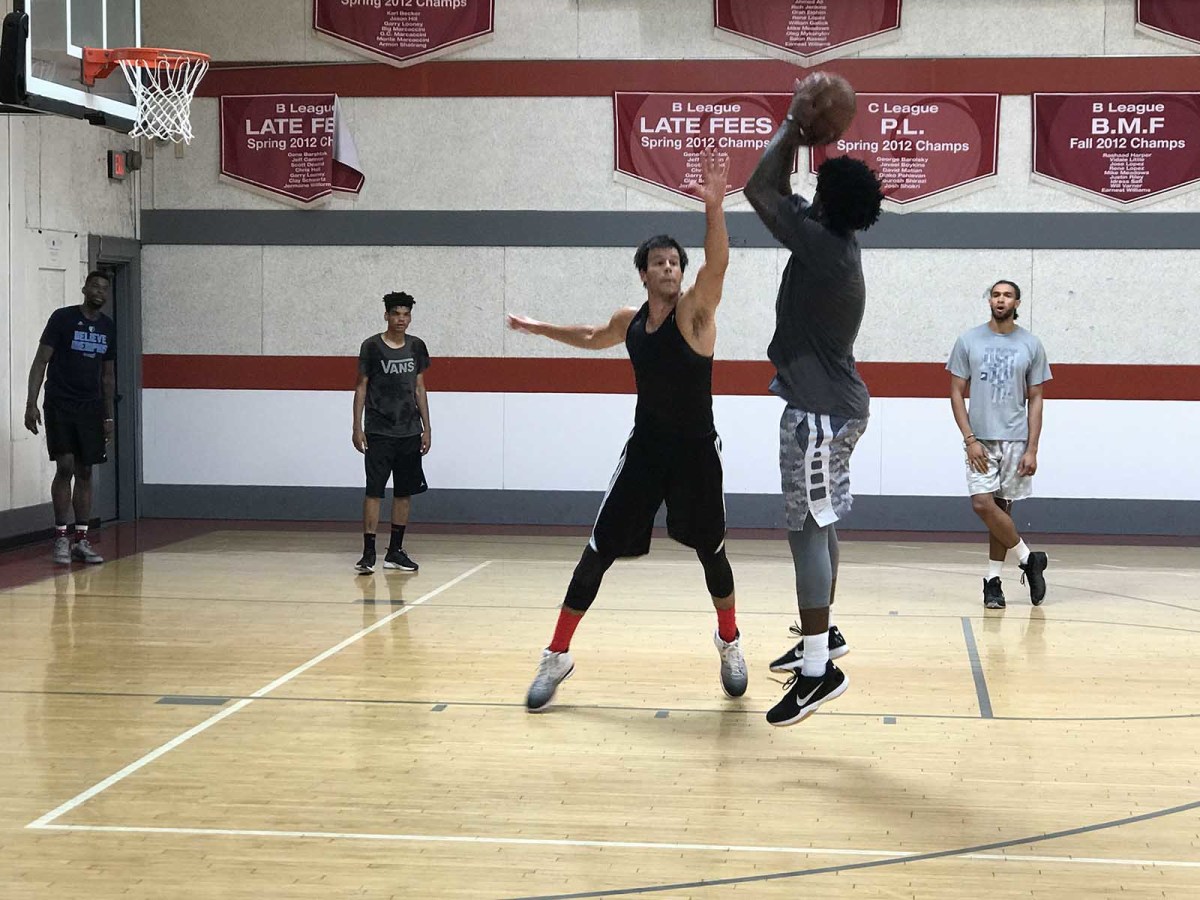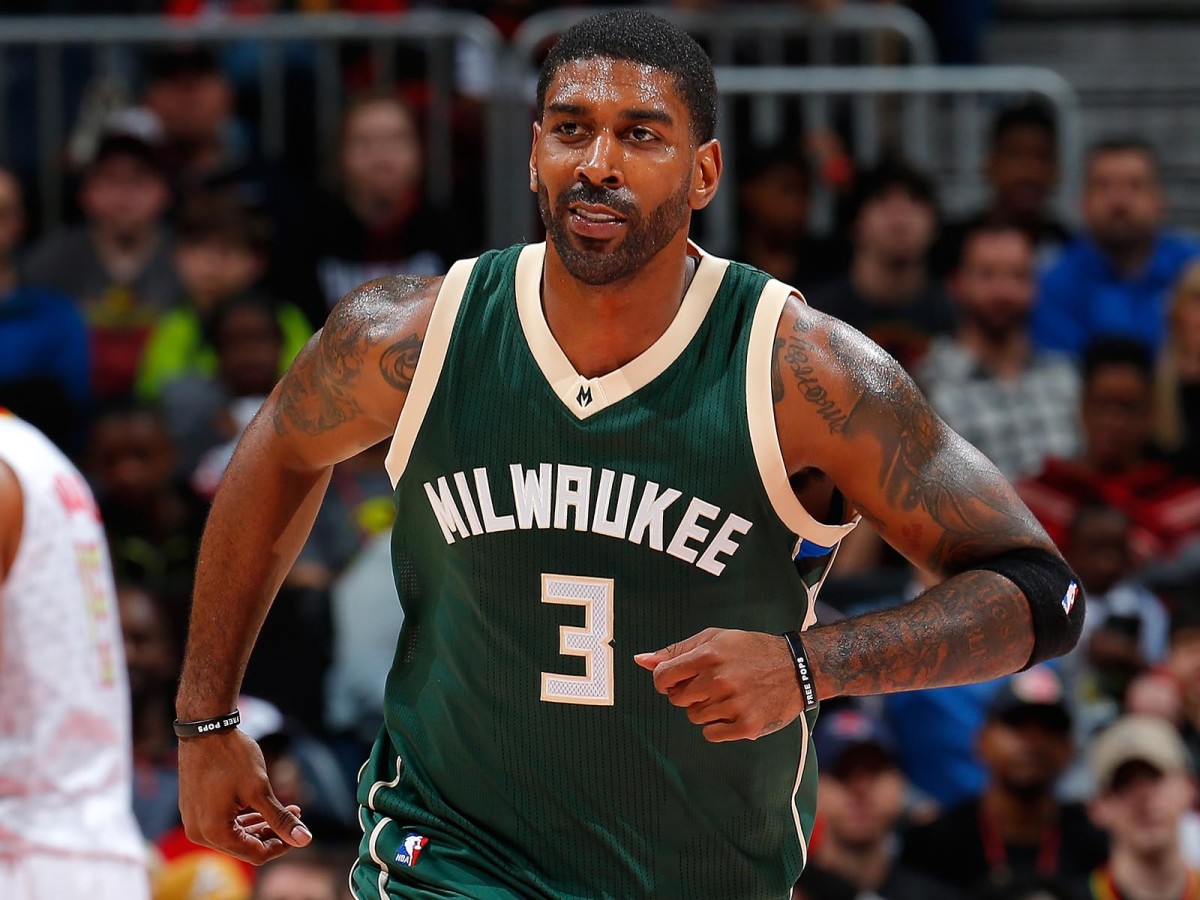O.J. Mayo, Banned and Forgotten, Fights to Save His NBA Career

LOS ANGELES — O.J. Mayo broke down in tears when he heard the NBA was going to ban him for at least two years for a failed drug test, and he surely would have cried even harder if he had known the embarrassment, loneliness and aimlessness that would follow.
His first instinct was to call his mother, Alisha, a conversation that left him feeling ashamed of the inevitable questions she would face at work. Two weeks later, shortly before his dismissal and disqualification became public on July 1, 2016, Mayo sent out a group text message to his family and close friends. As the former highly-touted high school star and 2008 lottery pick typed out the words to his siblings, the youngest of whom was still a teenager, he was forced to contemplate his neglected responsibilities. “If you’d been a preacher, your brothers would have been preachers,” Alisha had told him, quoting American Gangster, the movie about drug kingpin Frank Lucas’s family-run operation. “If you’d been a solider, they’d be soldiers. … They look up to you. They always expect you to know what’s best.”
The NBA’s press release hit on the first day of free agency last summer, and Mayo fielded a brief round of sympathetic and surprised texts from his friends while media organizations reported the news and social media users speculated about his drug of choice.
And then: nothing.
“I didn’t get a phone call last summer from anyone besides my family for 40 days,” Mayo told The Crossover at a Southern California gym last week, in his first extended interview since his suspension. “People who called me every day didn’t call me for two or three months. I still haven’t talked to some people who I talked to every week. Everybody was off my a--. I was tripping. ‘Oh, I see how the world is now.’ That was rock bottom.”

‘Take the ball away, what is there to do?’
Everywhere Mayo turned after his ban, he ran into reality checks. The 6'5" scoring guard, who had first captured the basketball world’s attention as an ultra-confident West Virginia high schooler, had just completed a three-year, $24 million contract with the Bucks. He was supposed to be an unrestricted free agent during the biggest free-agency spending spree in league history, but instead he watched comparable players cash in as he “missed out on the fun.” His isolation intensified when he received a notice that he was two months behind on a mortgage payment; his assistants had simply stopped managing his affairs. Soon after, the 29-year-old Mayo wrote out personal checks to pay his electricity, cable and phone bills for the first time in his life.
His game, meanwhile, had been heading in the wrong direction throughout his three seasons in Milwaukee. His stats dipped each year, bottoming out at 7.8 PPG and 37.1% shooting in 2015-16. That season was cut short by a broken ankle in March 2016, an injury that led him to put on significant weight and prevented him from working out much last summer. He didn’t receive FIBA clearance until November 2016, and he hadn’t previously put any thought into playing internationally anyway.
Top 50 Games of the 2017-18 NBA Season
Once the 2016-17 NBA season started, a “hurt” and “lost” Mayo couldn’t bear to watch, consumed by remorse over the years that had preceded his ban. He had “burned the candle at both ends [until I] ain’t got no candle left.” His “entourage” had grown too big, and he had prioritized “showing love to friends, hanging out, and finding girls” over the gym. He acknowledged smoking marijuana and abusing a prescription pain medication that triggered his two-year ban because it is on the NBA’s “drugs of abuse” list. (He emphatically denied testing positive for hard drugs like cocaine.)
Mayo also concluded that he had been “overwhelmed” by a string of difficult life events: his father, high school basketball star Kenny Ziegler, was sentenced to more than 10 years in prison for distributing crack cocaine, his brother was placed in juvenile lock-up, a close friend went to jail, and another was killed. “I was bred to play basketball and I thought I could balance everything,” he said. “I couldn’t.”
After consulting with Dwaine Barnes, his longtime coach and grandfather figure, Mayo eventually decided to sit out the 2016-17 season to fully rehabilitate his ankle and “get his stuff together.” For the first time in more than 20 years, the McDonald’s All-American, All-Pac 10 First Teamer and NBA All-Rookie First Teamer wasn’t part of a squad.
“Taking the game away is probably the closest thing to jail that I’ll get to,” Mayo said. “Since I was like 6 or 7, I’ve always had a basketball season. That was the lowest point in my entire life: The shellshock of not being in the NBA. All my peers are playing and I’m not because of boneheaded mistakes. Take the ball away, what is there to do?”
Mayo’s answer to his own rhetorical question was to escape his basketball bubble. After living half of his life in the public eye and spending the last eight seasons flying on charter planes, staying in 5-star hotels, and playing in front of tens of thousands of fans, he departed for an extended vacation. He visited Dubai, the Maldives, Uganda, and South Africa, but the highlight was a January visit to the Maasai Mara village in Kenya, which he documented on Instagram. There, he said he bought three cows—at $300 apiece—for each family in the village.
“I’ve been to Africa before,” he said. “It brings you to a still. This was about clearing my mind. When you’re on an NBA schedule, you’re away from home a lot. To be a man in Kenya, you have to care for your family away from home. I thought that was important. They’re gone for weeks breeding cattle so that the cycle of life can continue. It made me realize I’m blessed. At the time, I was dark. I was in a rough spot. I didn’t really see the light. The trip made me realize that I’m in a great situation and I’ve got to appreciate it. I could easily be in jail or dead.”
‘Can I get in there with y’all?’
When he returned to Los Angeles earlier this year, Mayo resolved to continue playing professional basketball. He started by putting himself through “a 40-year-old’s workout to break a sweat” at a local gym, but didn’t feel like he was making much progress. His ankle was better, but he was still well over his playing weight. He missed the camaraderie and competition of team practices, and he concluded that he desperately needed a routine.
“I was getting tired of watching SportsCenter and Stephen A. Smith,” Mayo said. “For the first time, I realized a schedule is what I love. Sometimes in the NBA, the schedule gets to be a lot with all these events, busses, planes and games. But once that’s gone, you miss it so bad.”
By chance in June, Mayo ran into Bucks forward Tony Snell, Grizzlies forward James Ennis and a workout group led by skills and development coach Chris Johnson and strength and fitness trainer Travelle Gaines. Mayo quickly tried to talk his way into the group, but both Johnson and Gaines had their reservations.
Johnson had “major concerns” about Mayo due to his checkered past and their lack of a preexisting relationship. Was Mayo really willing to abide by a strict set of guidelines and regulations? Gaines, meanwhile, said he didn’t even recognize Mayo, who weighed 242 pounds at the time, 32 pounds over his list weight. The longtime strength coach wondered whether Mayo would prove to be “lazy and entitled” because of his early fame. He also worried that Mayo’s commitment might wane because Mayo had saved more than enough of his $46 million career earnings to retire and live comfortably.
Mayo persisted. “Can I please get in there with y’all?” he asked the coaches. “I won’t talk. Please make me better. I love basketball. I cheated the game for three or four years. I want to give my all back. I want to prove I’m a professional, low-maintenance guy.”

Convinced, Johnson took on Mayo with a zero-tolerance policy and an hour-by-hour regimen. A single missed workout or unexcused tardiness would lead to expulsion. Mayo would receive a wake-up text message from Gaines as early as 6 a.m. and he would be in the gym ready for his first workout as early as 8 a.m. Over the course of a day, Mayo’s body would be, in Gaines’ words, “worked to exhaustion” during as many as four workout sessions.
Over the last two months, Mayo has spent his mornings doing 60 to 90 minutes of skill work with Johnson followed by a high-repetition, low-weight lifting session with Gaines. After a break for lunch, Mayo has moved on to a yoga or SoulCycle class with his longtime girlfriend before returning to the court for shooting drills and five-on-five scrimmages during an evening session with Johnson. Depending on gym availability, the all-day routine sometimes requires hours of commuting around the greater Los Angeles area.
The rules are just as strict off the court. Gaines immediately insisted that his new client stop drinking alcohol to aid his weight-loss effort. Mayo, who was “pretty fed up” with how he was living, also committed to a vegan diet. Mayo said Friday that he is completely sober and that he hasn’t been to a club in more than three months, even though he lives in Hollywood. The trainers proudly estimate that Mayo has dropped more than 25 pounds this summer. “There was a stigma around him,” Gaines said. “But he’s really humble, country and unbelievably smart. He sends me a ‘Thank you’ text almost every day.”
As Mayo was building the new structure of his life, Bleacher Report ran a lengthy story about him in July entitled, “Whatever happened to O.J. Mayo? Not even some of his closest friends know.” The piece asserted that Mayo had disappeared and that “10 months of reporting” that included contacts with “40 of Mayo’s former teammates, coaches, agents, GMs and players union reps” had yielded nothing concrete as to his whereabouts.
“What happened to O.J.?” Johnson asked last week. “He’s in the gym with me. Everybody is sitting there thinking this is a joke. He’s in L.A. working every day all summer. Don’t paint pictures of people without relevant information. Just because he broke a rule, doesn’t mean that you can tell the wrong story.”
Indeed, Mayo hardly appeared to be a long-lost figure last Thursday, when he went through a series of scrimmages with Jimmy Butler, Dwyane Wade, Victor Oladipo, Taj Gibson, Snell, Ennis, Tyler Ulis, Josh Hart, Thomas Robinson, Jeremy Tyler and a host of other NBA players and hopefuls at a college gym on L.A.’s westside. His fellow players called him “Juice” and high-fived him like anyone else. During the games, Mayo looked steady and quick on his feet, crossing over behind his back for pull-up jumpers and slashing through the paint for floaters. He played quietly and left by himself. “O.J. is the best story in here,” Johnson said afterwards. “He’s fighting hard to clear his name.”

The next morning, Mayo made an early drive up to the San Fernando Valley, where he lifted weights and went through a skill session at a gym in Reseda. With a senior citizen punching a heavy bag in an adjacent room and an awkward teenager bricking free throws on the other end of the court, Mayo unleashed a series of well-honed up-fakes to set up lefty lay-ups. Afterwards, he circled up, raised his hand with the group, counted to three, and shouted, “Hard work.” He was, as he had hoped a few months earlier, one of the guys.
As Mayo has processed his ban, he has often thought back to that first phone call, when he broke the news to his mother. He had braced for anger and frustration, and yet Alisha had responded with the opposite. “She said she was so happy,” Mayo recalled. “She wasn’t happy that I got suspended or about the embarrassment that I was going to go through. But she was happy that reality was going to hit me and make me a better person. She was 100% right. I caught the light.”
‘Far from crazy’
The trick now, of course, is to make it last.
Mayo’s next move isn’t clear. He’s still with Landmark Sports Agency, but Rob Pelinka, his old agent, is now the Lakers’ GM. He’s interested in playing in China, Spain or Israel this fall, but he hasn’t yet fielded any offers. If nothing concrete materializes, Mayo has an invite to continue his current training program in Minnesota, where Johnson and Gaines will be working with Jimmy Butler. “When you mess up, teams wonder whether they want to put their hands on you,” Mayo said. “I respect that. They can only go by a rap sheet or a résumé. If I get somewhere, I think I can change the perception.”
After July 1, 2018, Mayo will be eligible to apply for reinstatement to the NBA. Per league guidelines, both the NBA and the National Basketball Players Association must approve his return, and the two sides can consider a host of factors to weigh that decision, including the circumstances surrounding Mayo’s dismissal, his personal conduct during the ban, his character and morality, whether he has completed a treatment program, and whether he’s a “suitable role model for youth.” Mayo must also be able to “demonstrate by proof of random urine testing” that he has not failed any marijuana or drug tests for a year prior to his reinstatement application.
The reinstatement process is intended to be rigorous, and there are a long list of NBA players whose careers have been halted by drug-related issues, including Mayo's former Milwaukee teammate, Larry Sanders. Nevertheless, multiple players have successfully returned from lengthy drug-related bans, including Chris “Birdman” Andersen, who was formally reinstated in 2008 after serving a two-year ban. If Mayo is reinstated, he would become an unrestricted free agent as Milwaukee has renounced his rights.
Mayo knows all the potential excuses and he chooses to reject them. Did he have too much, too soon in life? Sure, he admitted, his childhood and teen years were exceptional. “But if I had the same focused mindset I had at 15 and 16 later when I was 24 and 25,” he argued, “we wouldn’t be sitting here talking right now.” Could he have used a better father figure and more guidance? Mayo didn’t want to say that, repeatedly pointing out that his mother had “taught me right from wrong.” Did his friends, or fake friends, lead him astray? “I knew better,” he argued. “I knew guys in my neighborhood who should have made it somewhere but got stuck. I wasn’t raised like that.” Were the league’s drug rules unfair? “Every man writes his manner,” he said. “I just made poor decisions.”
Most of all, he insisted, his former coaches, teammates, organizations and the NBA itself do not bear any of the blame for his current predicament. With the benefit of hindsight, Mayo wished he had taken the league’s counseling and support programs more seriously. He admitted that he hadn’t acted professionally enough to deserve a spot in the NBA, and he thanked Milwaukee coach Jason Kidd, GM John Hammond (now with Orlando), and owners Marc Lasry and Wes Edens for doing “everything in the world to help me.”

“I want to go back to what I left [in Milwaukee],” Mayo said, when asked for his dream destination. “I was real close with Jason Kidd. That was the best relationship I had with a coach besides [Dwaine Barnes]. I had great relationships with Giannis [Antetokounmpo] and Khris Middleton. I was comfortable there. I felt like I let them down, cheated them for two years. They paid me $8 million to be, in my eyes, a subpar player. They invested millions of dollars for me to be on top of my s---, and when you’re not on top of your s---, it shows. I’ll be 30 next summer. If they just give me the chance, I can make it up. I owe them.”
His checklist is coming together. The ankle is no longer a hindrance. Johnson says Mayo’s rhythm, shooting touch and handle are NBA-ready, leaving his full-court conditioning as the only open basketball question. Gaines marvels at Mayo’s physical transformation, noting that he’s quickly closing in on his ideal playing weight.
However, Mayo understands that his fate will largely be determined by his ability to restore trust and repair his reputation, and he knows that his history works against him. There was the improper gift scandal during his one year at USC. There was the alleged fistfight with Tony Allen over a card game on the Grizzlies team plane. There was the 10-game suspension in 2011 for testing positive for DHEA, a hormone found in over-the-counter supplements that’s banned under the NBA’s anti-steroid policy. There was his slipping play in Milwaukee, the drug use, and the so-called mysterious disappearance following his ban.
“[Thinking I’m crazy] is an easy perspective for someone to have given the way I was living,” Mayo said. “I’m not ignorant. Somebody could easily fix their mind to say something like that because of my résumé. I don’t have a media rep or PR company making sure that everything is good, and I don’t go to social media with my problems.
“But that ain’t me. I’m far from crazy. I’ve made some crazy a-- decisions, but I’m not crazy. I’m good with myself. I’m comfortable with my body. I dug myself a hole, but it’s not a coffin. I can still get out.”
